Submarines with battleship caliber
Underwater monitors during the First World War in Great Britain called submarines, which were armed with powerful artillery weapons. The idea of creating such a ship, the main weapons which would not be torpedoes, but artillery, soared in the air from the very beginning of the active use of submarines. The British went farthest on this path, who in the 1916-1919 developed a series of submarines armed with large (battleship) artillery. Data ships and entered history like underwater monitors like "M".
It is worth noting that in history there were other projects for the construction of artillery submarines, but it was the models proposed by the British Admiralty that rightfully became record holders in the caliber of installed artillery - 305 mm. At the same time, the most powerful submarine built with artillery weapons was the French submarine Surkuf, armed with two 203-mm artillery pieces. The boat, built before the Second World War, although it was an interesting project, in its capabilities lost to both classic submarines and classic cruisers.
Gloomy british genius
Despite the fact that the boats could not demonstrate the capabilities of their powerful weapons in battle, and their combat value turned out to be practically zero, underwater monitors rightly attributed to the unique creations of British engineering. The main purpose of the British underwater monitors was coastal patrolling and inconspicuous bombardment of enemy ships, as well as coastal targets and fortifications with powerful artillery. At the same time, the British were seriously afraid of the fact that such boats were the first to be developed by the Germans, which would create serious problems for Great Britain. True, the Germans did not even have such plans, which the Admiralty simply did not know about.
The idea of creating submarines armed with powerful artillery weapons was first voiced in the UK in the second half of the 1915 year. In many ways, such a project was born thanks to the low efficiency and reliability of the British torpedoes of that time period. Torpedo tubes and torpedoes themselves were unreliable weapons. As the British themselves joked, English torpedoes could do everything except the main thing - to sink enemy ships. Often torpedoes floated to the surface and enemy ships easily dodged them, often on the contrary they went into the depths, often torpedoes simply broke into pieces. And even when they hit the target, torpedoes did not always explode, which thwarted such rare successful attacks. It was in such an environment that the British decided to create their underwater monitors, armed with powerful 305-mm guns, shot from a decommissioned battleship “Majestic”.
Naturally, British engineers and admirals considered different types of artillery weapons. Already during the First World War, submarines with powerful weapons, for example, 120-mm guns, were born. Against this background, the idea of installing battleship guns on a submarine even then looked utopian. Prior to this, the E-20 submarine armed with an 152-mm cannon boasted the largest caliber, while German submarines with two 150-mm guns were only at the construction stage. Against this background, the Admiralty was considering the option of creating a submarine armed with two 190-mm guns. But, as subsequent events showed, it was not possible to fit two 190-mm guns on a submarine at once, so it was decided to limit ourselves to one gun, but immediately 305-mm. For the most part, the Admiralty did not discuss the caliber of the gun for longer, but asked whether such a submarine was needed for naval officers and how such an underwater monster could be used.
The main reasons for building underwater monitors were as follows. Firstly, as noted above, the existing torpedo armament was unreliable, and the torpedo attack itself was a very difficult task, even with the correct calculations, the crew of the boat could fail the equipment. Secondly, the submarine could take on board a much larger supply of 305-mm shells than torpedoes. Thirdly, unexpectedly surfacing in front of the enemy, the boat could guaranteed hit the enemy with its heavy artillery weapons, the latter simply would not have time to maneuver. As a result, the concept of creating an underwater monitor of type M was adopted, and the Admiralty issued a task for the construction of the first four ships.
Submarines were not created from scratch. The largest British submarines of the K. type at that time were taken as the base. The Vickers companies were instructed to convert the K18-K21 submarines into the underwater monitors M1, M2, M3 and M4, respectively. The last four K-type submarines were ordered in February 1916, by that time, technical documentation for new submarine warships was ready. The construction work had not yet begun, when the final decision was made to convert the boats into underwater monitors of type M.
Technical Features of Type M Underwater Monitors
The M-type submarine monitors were based on a deeply revised project of large British K-type submarines, which, during two years of operation, did not show themselves well, the British sailors had a lot of complaints about these submarines. The main problem with K-type submarines was their steam turbine power plant. The power plant was so unreliable that it often disabled warships, forcing them to get up for lengthy repairs, and in some cases caused the death of the boats along with the crew. Taking into account the negative experience, the M-type underwater monitors were immediately developed for the installation of a diesel-electric propulsion system. This option will become the main one in fleets different countries for many decades and the only one before the appearance of the first submarines with a nuclear power plant.
The sturdy hull of the new submarines was made of steel with a thickness of 14 and 15,9 mm in the middle of the hull, becoming thinner to the ends, the light hull was made of steel with a thickness of 6,4 to 19 mm. All type M submarine monitors were one and a half hull boats with an estimated diving depth of 60 meters. The boats were supposed to go to periscope depth in 90 seconds. The rugged submarine hull was divided by bulkheads into 11 compartments. The system of immersion and ascent immediately included 20 external ballast tanks, designers placed them on the sides of the boat. The total capacity of the ballast tanks was 375 tons. The surface displacement of the boats reached 1594 tons, the submarine - 1946 tons. The maximum length of the monitors was 90,15 meters, diameter - 6,2 meters, draft - 3,56 meters.
The advent of a diesel-electric power plant secured the boat and its crew. Compared to the steam turbine installation on type K boats, this was a step forward. On the underwater monitor, the designers placed two diesels for surface movement and four electric motors for movement under water. Vickers was responsible for the development of diesel engines. Four-stroke 12-cylinder diesel engines with 1200 horsepower were installed on the boats. everyone. Four electric motors with 800 horsepower were used for underwater travel. everyone. The engines of the underwater monitor set in motion two three-blade propellers whose diameter reached 1,78 meters. The power plant was considered quite powerful and provided unusual ships with good surface and underwater speed. In the surface position, the monitors could accelerate to 15 nodes (almost 28 km / h), in the underwater position, the speed was 8-9 nodes (to 16,5 km / h). In the surface position, moving at an economic speed of 10 knots, the ship could overcome without refueling 4500 nautical miles (about 8300 km). In the underwater position, the monitors could overcome no more than 150 km.
305-mm gun placed in front of the submarine. Initially, it was planned to make the artillery mount waterproof and armored, but over time this idea was abandoned. Only the charging chamber remained waterproof. The weight of the entire installation together with the gun reached 120 tons, the mass of ammunition, consisting of 40 shells, was another 29 tons. An 305-mm gun with a barrel length of 40 calibres made it possible to fire at targets at a distance of 19 km. The rate of fire of the gun was low - one shot in 75 seconds. At the same time, the horizontal guidance angles of the gun were only 15 degrees, the elevation angle was 20 degrees, the gun was lowered down by 5 degrees. An additional artillery weapon was the 76-mm gun Mk II, which was located at the rear of the monitor and allowed, including, to fire at air targets. Designers and torpedo armaments, which were represented by 4x450-mm torpedo tubes, were preserved, the ammunition of the boat consisted of 8 torpedoes.
The crew of type M underwater monitors included 65 people, among whom were 6 officers and 59 foremen and sailors. Since the ship was a specific submarine, a very large part of the team was engaged in servicing artillery weapons. In the 305-mm gun system, 11 people served, in the cellar and on the supply of shells there were 16 sailors working, 4 gunners compiled the 76-mm stern gun, two more sailors had to bring shells to them.
Underwater monitors of type M were considered comfortable for the work and rest of the crew by ships. The boats were large in size and had a diesel-electric power plant instead of steam boilers and turbines on type K boats. At the same time, the crews were glad that the ship stopped sweeping through the openings and pipes for air access, as it was on the above submarines. Another advantage of the ships was that during the shift service the sailors on the bridge remained dry almost in any weather, which was very unusual for submarines of that time. The sailors were protected by a developed superstructure and an 305-mm gun, which served as a wave breaker and prevented the wave from sweeping the bridge.
The Fate of Type M Underwater Monitors
The lead ship of the series, the M1 underwater monitor, was laid down by Vickers in June 1916. The launch of the new combat ship took place on July 9 1917 of the year, and commissioning took place on April 17 1918 of the year. The boat was ready for the very end of World War I, but the British command was not eager to test the ship in combat conditions. Instead of battles in the North Sea, an underwater monitor was sent to the Mediterranean Sea, where he never met the enemy. The fate of the M1 underwater monitor ended tragically. The boat died in peacetime with the entire crew, in 1925 in the Plymouth area, she collided with a Swedish ship and sank.
The M2 underwater monitor was laid down in July 1916, the launch took place at the very end of the First World War - October 19 on October 1918. An unusual ship entered service after the end of the conflict - February 14 1920 of the year. In 1925, the M2 underwater monitor underwent a major upgrade and was rebuilt as an underwater aircraft carrier. In this capacity, the ship was quite fruitfully used until the 26 of January 1933 of the year. On this day, the boat sank at a depth of 32 meters near the beach of Cesil, the whole crew died. A later survey showed that the hangar hatch was opened on the boat. Most likely, the depressurization of the boat occurred by mistake, but what exactly led to such sad consequences remained unclear. This warship became a true long-liver of the entire series, having served in the Royal Navy until the tragedy for almost 13 years.
The M3 underwater monitor was laid in December 1916, the launch took place on October 19 1918. The ship entered service after the end of the First World War on July 9 1920. The entire service of the ship was absolutely unremarkable. In 1927, the British Admiralty decided to remake the ship into a large underwater mine layer. The dismantling of the 305-mm gun mount and the modification of the superstructure made it possible to mark immediately on the submarine 100 sea mines of the Mk type. 5. The service of the boat was uneventful and ended in 1932, when the ship was scrapped.
The M4 underwater monitor was laid down on 1 on December 1916 at Armstrong Whitworth. The boat was launched after the First World War - July 20 1919 years and decided not to finish building. After the cancellation of construction, the ship was simply dismantled for scrap.
Summing up the program for creating underwater monitors of type M, it can be noted that, despite the original technical solutions, the boats were not in demand by the military and did not have any impact on the course of the First World War operations at sea. The M1 monitor was used only for patrol functions and has never used its main caliber for its intended purpose. Of the entire series of underwater monitors, three boats were completed. Of these, only two ships after a major modernization could be used quite productively in military service.
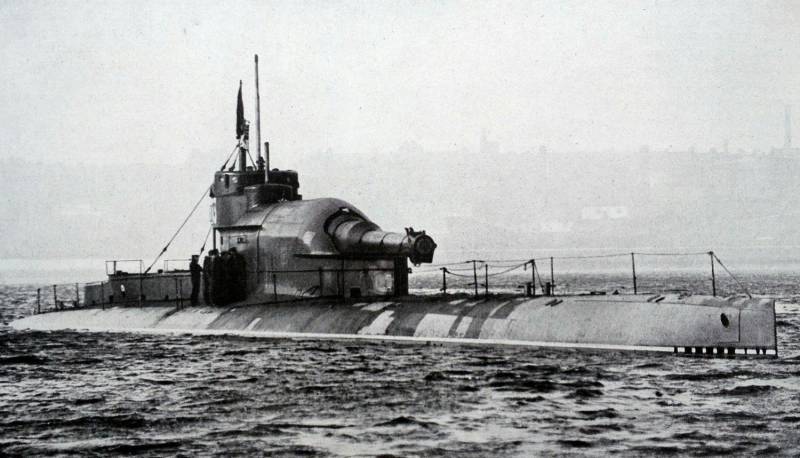
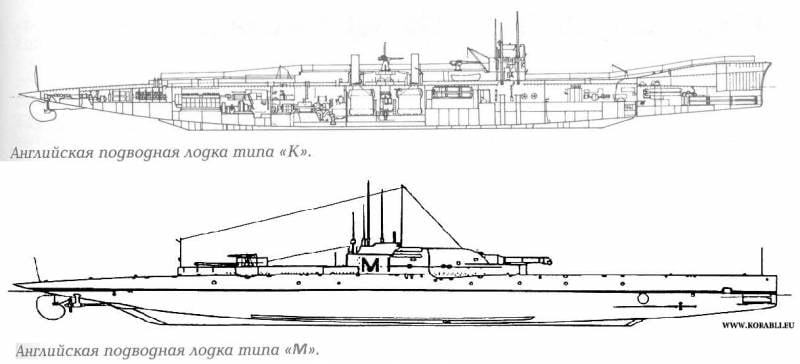
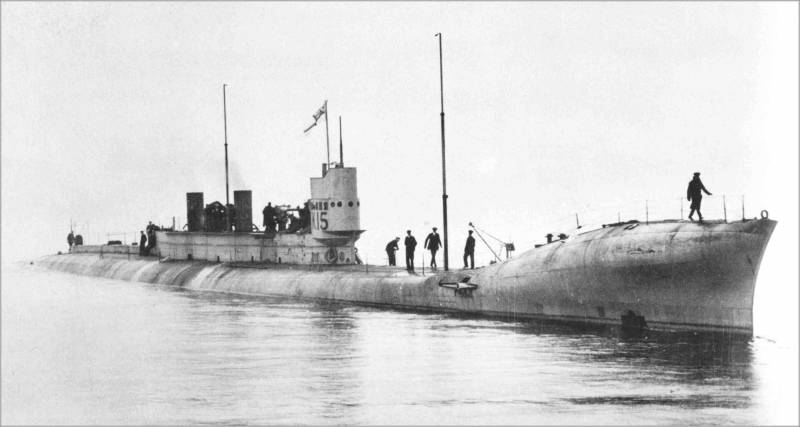
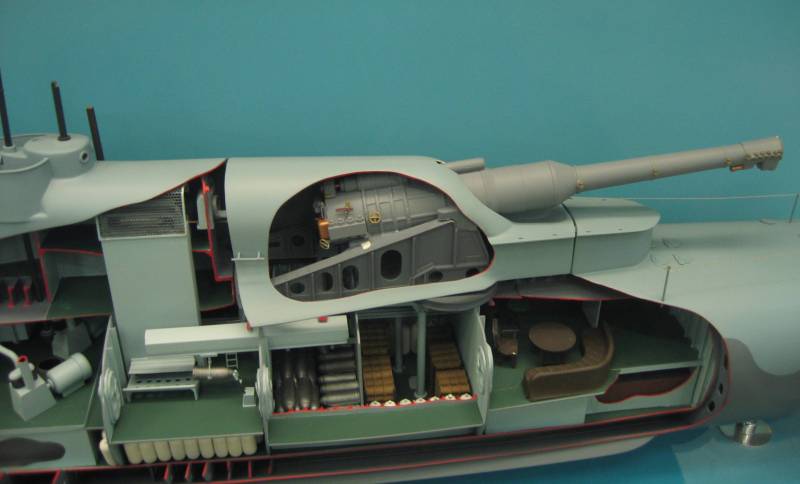
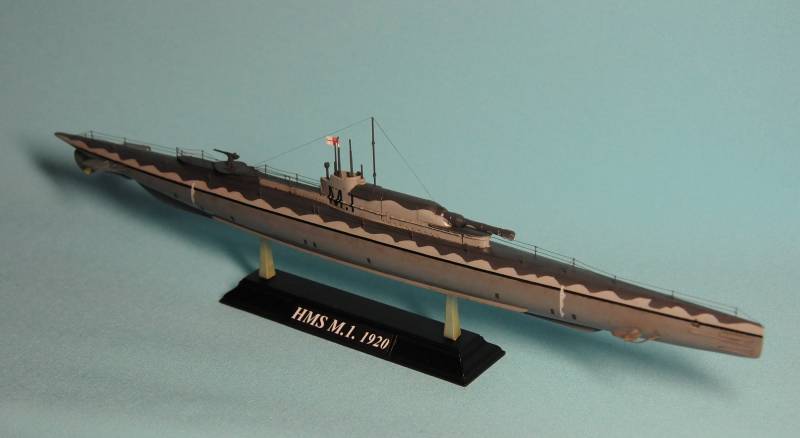
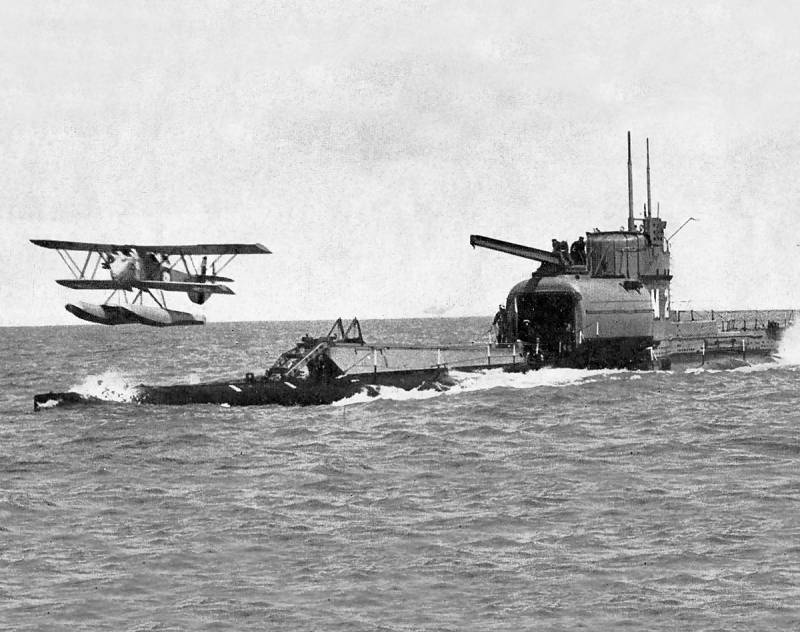
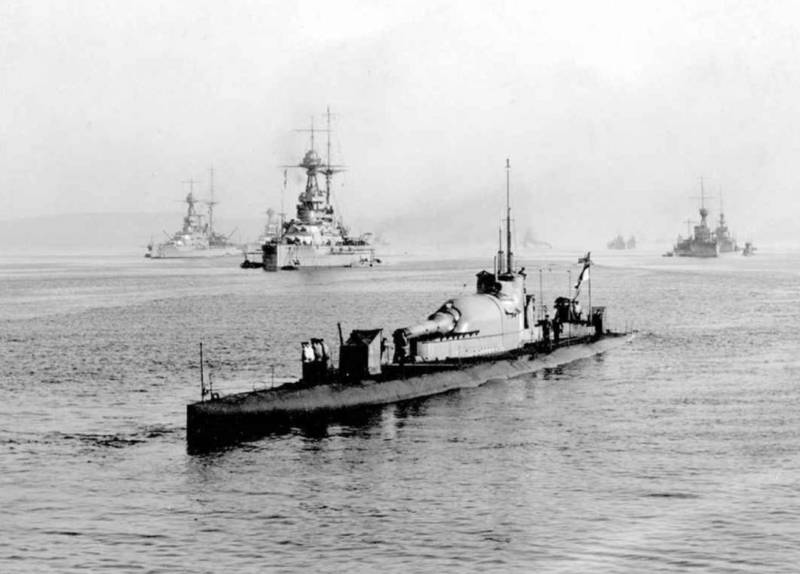
Information